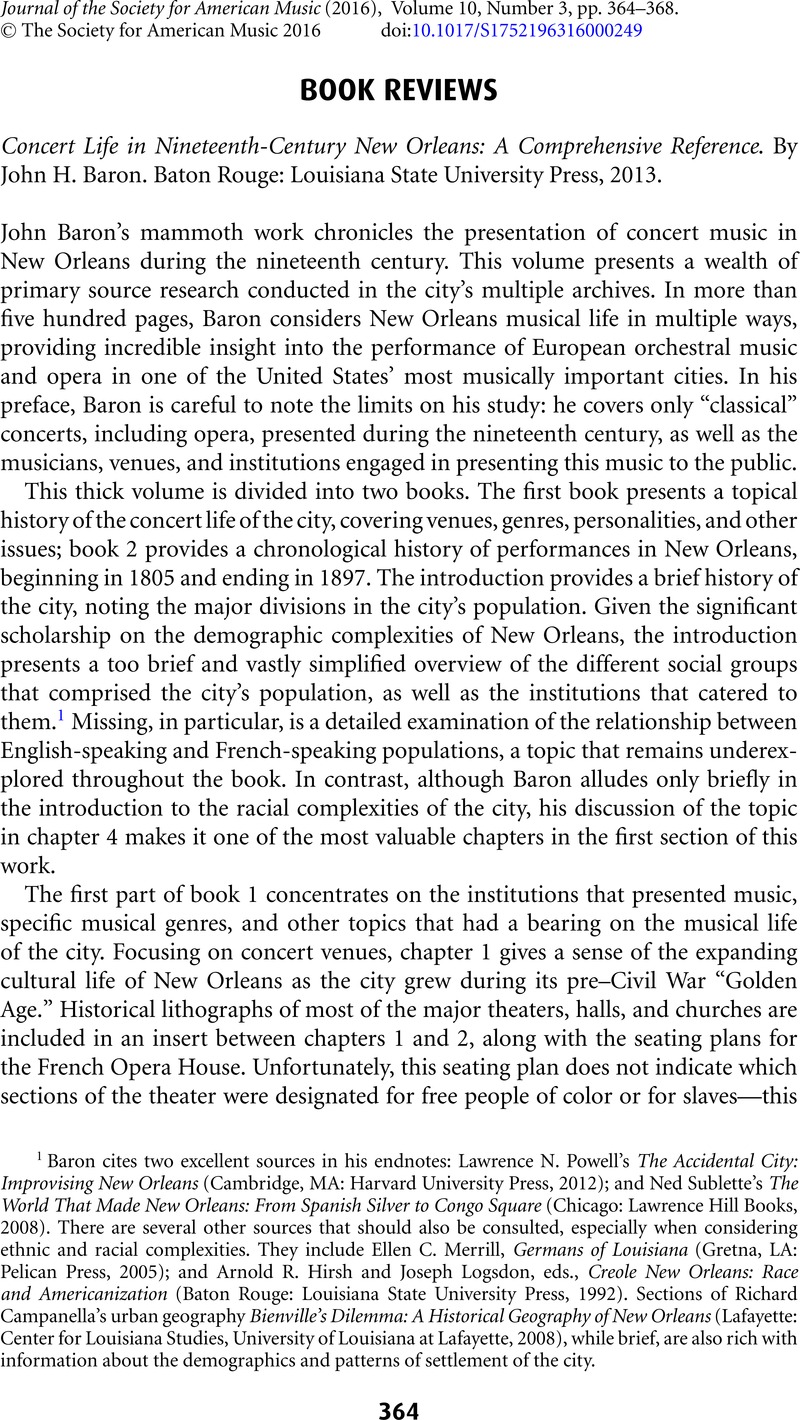No CrossRef data available.
Article contents
Concert Life in Nineteenth-Century New Orleans: A Comprehensive Reference. By John H. Baron . Baton Rouge: Louisiana State University Press, 2013.
Published online by Cambridge University Press: 30 August 2016
Abstract

- Type
- Book Review
- Information
- Copyright
- Copyright © The Society for American Music 2016
References
1 Baron cites two excellent sources in his endnotes: Powell's, Lawrence N. The Accidental City: Improvising New Orleans (Cambridge, MA: Harvard University Press, 2012)CrossRefGoogle Scholar; and Sublette's, Ned The World That Made New Orleans: From Spanish Silver to Congo Square (Chicago: Lawrence Hill Books, 2008)Google Scholar. There are several other sources that should also be consulted, especially when considering ethnic and racial complexities. They include Merrill, Ellen C., Germans of Louisiana (Gretna, LA: Pelican Press, 2005)Google Scholar; and Hirsh, Arnold R. and Logsdon, Joseph, eds., Creole New Orleans: Race and Americanization (Baton Rouge: Louisiana State University Press, 1992)Google Scholar. Sections of Campanella's, Richard urban geography Bienville's Dilemma: A Historical Geography of New Orleans (Lafayette: Center for Louisiana Studies, University of Louisiana at Lafayette, 2008)Google Scholar, while brief, are also rich with information about the demographics and patterns of settlement of the city.
2 There is a small body of really excellent work on the sex trade in New Orleans that also included the institution of concubinage, which continued to be practiced even after the Civil War. Most of this work does not directly address music but does contain discussions of ballrooms, saloons, and theaters that facilitated this trade. Long, Alecia P., The Great Southern Babylon: Sex, Race and Respectability in New Orleans, 1865–1920 (Baton Rouge: Louisiana State University Press, 2004)Google Scholar considers the period after the Civil War. Schafer, Judith Kelleher, Brothels, Depravity and Abandoned Women: Illegal Sex in Antebellum New Orleans (Baton Rouge: Louisiana State University Press, 2009)Google Scholar considers the period before the war, and, although her focus is on prostitution, she frequently mentions the city's ballrooms. Landau, Emily Epstein, Spectacular Wickedness: Sex, Race, and Memory in Storyville New Orleans (Baton Rouge: Louisiana State University Press, 2013)Google Scholar is narrowly focused on the city's infamous vice district at the turn of the twentieth century.
3 In New Orleans the English-speaking side of the city was referred to as the American quarter, just as the Creole section was the French Quarter.




